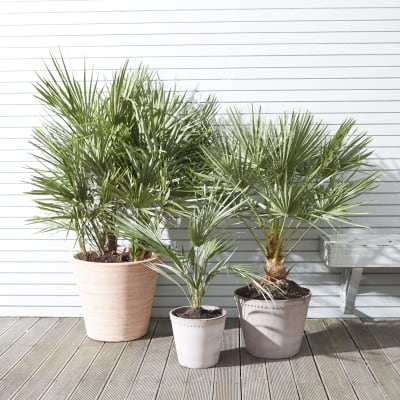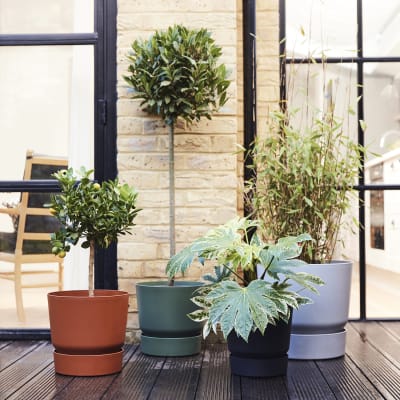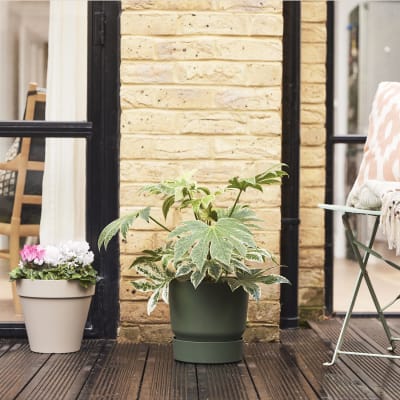

From £35.00


From £35.00
Out of stock
See optionsOnce you’ve chosen your outdoor plants, you’ll need to find the right container.
There are a lot of things you can consider when choosing containers for your outdoor plants. This lesson will run through the main things to keep in mind.
First up is drainage. This one’s easy: make sure your container has holes in the bottom. These are essential to allow excess water to escape and prevent the roots becoming waterlogged which will kill the plant. If you are planting into a pot without any drainage holes, make sure to drill some.
Next, think about weight. When you add together the weight of your container, soil, plants and water things start to get very, very heavy. If planting up high, make sure that your balcony, windowsill or rooftop can hold this combined weight. Will you need to move the plants around regularly? In this case choose a lighter pot, or put it on wheels so it can be easily rolled to a new position.
On the other hand, make sure the container is substantial enough to counterbalance a top-heavy plant or stand up in a windy spot.
Certain container materials, such as unglazed terracotta, are porous. This allows more airflow around the plant’s root system, but also means the soil dries out more quickly as the pot absorbs some of the moisture. As a result, check the soil more regularly in these pots as you may need to water them more frequently. Frost can be the end of outdoor containers if you’re not careful; if you plan to leave your container outside all year it’s best to go for something frost-proof like plastic and metal that won’t crack when temperatures drop.
If you’re still not sure what to go for, these are the pros and cons of the most common kinds of planter.
Metal containers come in a variety of colours and designs to suit your taste, but they can get really hot in the summer. This means that your plants root systems could get frazzled - it’s worth keeping them in their plastic nursery pots to protect against this.
Terracotta and clay pots look lovely and the porous, natural material means extra airflow around your plant’s roots. They’re not perfect, though: plants in terracotta pots will need extra attention to check they’re not drying out and the pots can crack in freezing weather. Glazed terracotta is less porous and more frost-proof.
For balcony gardeners, plastic and fiberglass pots are a great shout - they’re lightweight so you can move them around more often and they put up well against water loss and frost. A solid all-rounder.
Wood looks lovely and won’t be damaged by low temperatures, but is prone to rot - you’ll need to replace your wooden planters every few years. If you want to grow edibles, then check which chemical has been used to treat the wood to make sure the soil is safe from toxins.
Finally, there’s stone, which is beautiful and will bolster larger plants, but tends to be really heavy and more expensive than other planters.


From £6.00
Out of stock
See options

£30.00
Fits pots 21-25cm
Out of stock

Free standard delivery on orders over £50
Need to get in touch?
Just use the help widget to send a message to the team.
Customer service opening hours:
Monday to Sunday 9am-8pm
Live chat is available 10am-5pm Monday to Friday
Secure payment - our systems are protected with bank-grade security. Your payment is safe with us.
We work directly with over 40 specialist growers to bring you the best quality plants
If you need advice, just get in touch - we’ll be your personal plant gurus as long as you need us. If something’s up, tell us within 30 days of delivery — we’ll sort it.
We usecookiesto improve your experience on our site.